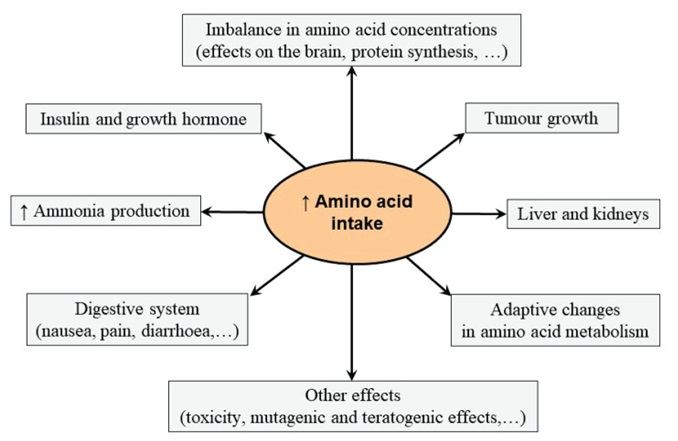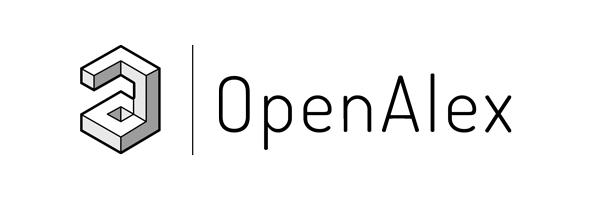THE IMPACT OF HORMONAL, NON-HORMONAL SUPPLEMENT AND TOTAL DAILY ENERGY INTAKE ON BODYBUILDERS' HEALTH DURING OFF-SEASON STRENGTH TRAINING IN SULAYMANIYAH CITY- IRAQ
Views: 618 https://doi.org/10.59807/jlsar.v4i2.85
https://doi.org/10.59807/jlsar.v4i2.85
Keywords:
Bodybuilder, Energy Intake, Health, Muscle Mass, Sports SupplementsAbstract
Nutrition programs, proper guidance, and supplements (hormonal and non-hormonal supplements) that enhance muscle mass could be key factors for bodybuilders to reach their goals with a correct strategy. However, they could involve them in possible adverse health risks. The suit questionnaire form was designed to collect information about bodybuilders' total daily energy intake and supplements to strengthen and boost their muscle mass. It was used to discover whether they were on the right track regarding required energy intake. Moreover, the impact of hormonal and non-hormonal substances on their health has also been investigated. For that, thirty-one advanced bodybuilders as participants were taken (as volunteers); most of them had a long period of training experience and had a muscular body shape. The rest have at least more than four years of bodybuilding experience. Results show that the majority of them didn’t reach the required total daily calorie intake or exceeded by a great margin (3800 kcal). Surprisingly, they also had an unacceptable amount of administrated anabolic androgenic steroids (AAS), some of which are on the banned list by authorized food organizations. According to sports supplements' dose-related effects and health risks, nutrition program strategy and practicing that kind of supplement use may help them build muscle mass but in a very unhealthy way. Bodybuilders seem to be at the possible risk of practicing incorrect paths, because they may be misguided in terms of proper nutritional programs and using muscle enhancers.
Downloads
References
J. Iraki, P. Fitschen, S. Espinar, and E. Helms, “Nutrition recommendations for bodybuilders in the off-season: A narrative review,” Sports, vol. 7, no. 7. 2019. doi: 10.3390/sports7070154.
R. G. Villani, J. Gannon, M. Self, and P. A. Rich, “L-Carnitine supplementation combined with aerobic training does not promote weight loss in moderately obese women,” Int J Sport Nutr, vol. 10, no. 2, 2000, doi: 10.1123/ijsnem.10.2.199.
C. P. Lambert, L. L. Frank, and W. J. Evans, “Macronutrient considerations for the sport of bodybuilding,” Sports Medicine, vol. 34, no. 5. 2004. doi: 10.2165/00007256-200434050-00004.
W. M. Sandoval, V. H. Heyward, and T. M. Lyons, “Comparison of body composition, exercise and nutritional profiles of female and male body builders at competition,” Journal of Sports Medicine and Physical Fitness, vol. 29, no. 1, 1989.
M. A. Tarnopolsky, J. D. MacDougall, and S. A. Atkinson, “Influence of protein intake and training status on nitrogen balance and lean body mass,” J Appl Physiol, vol. 64, no. 1, 1988, doi: 10.1152/jappl.1988.64.1.187.
P. W. R. Lemon, M. A. Tarnopolsky, J. D. MacDougall, and S. A. Atkinson, “Protein require-ments and muscle mass/strength changes during intensive training in novice bodybuilders,” J Appl Physiol, vol. 73, no. 2, 1992, doi: 10.1152/jappl.1992.73.2.767.
J. F. Dorgan et al., “Effects of dietary fat and fiber on plasma and urine androgens and estro-gens in men: A controlled feeding study,” American Journal of Clinical Nutrition, vol. 64, no. 6, 1996, doi: 10.1093/ajcn/64.6.850.
J. M. Davis, D. A. Jackson, M. S. Broadwell, J. L. Queary, and C. L. Lambert, “Carbohydrate drinks delay fatigue during intermittent, high-intensity cycling in active men and women,” Int J Sport Nutr Exerc Metab, vol. 7, no. 4, 1997, doi: 10.1123/ijsn.7.4.261.
L. G. Snetselaar, J. M. De Jesus, D. M. Desilva, and E. E. Stoody, “Dietary Guidelines for Amer-icans, 2020-2025: Understanding the Scientific Process, Guidelines, and Key Recommenda-tions,” Nutr Today, vol. 56, no. 6, 2021, doi: 10.1097/NT.0000000000000512.
W. W. Campbell, M. C. Crim, V. R. Young, L. J. Joseph, and W. J. Evans, “Effects of resistance training and dietary protein intake on protein metabolism in older adults,” Am J Physiol Endo-crinol Metab, vol. 268, no. 6 31-6, 1995, doi: 10.1152/ajpendo.1995.268.6.e1143.
T. W. Buford et al., “International Society of Sports Nutrition position stand: Creatine supple-mentation and exercise,” Journal of the International Society of Sports Nutrition, vol. 4. 2007. doi: 10.1186/1550-2783-4-6.
V. J. Dalbo, M. D. Roberts, J. R. Stout, and C. M. Kerksick, “Putting to rest the myth of creatine supplementation leading to muscle cramps and dehydration,” British Journal of Sports Medicine, vol. 42, no. 7. 2008. doi: 10.1136/bjsm.2007.042473.
A. Fouré and D. Bendahan, “Is branched-chain amino acids supplementation an efficient nu-tritional strategy to alleviate skeletal muscle damage? A systematic review,” Nutrients, vol. 9, no. 10. 2017. doi: 10.3390/nu9101047.
R. Elango, K. Chapman, M. Rafii, R. O. Ball, and P. B. Pencharz, “Determination of the tolera-ble upper intake level of leucine in acute dietary studies in young men,” American Journal of Clinical Nutrition, vol. 96, no. 4, 2012, doi: 10.3945/ajcn.111.024471.
R. W. Evans, J. D. Fernstrom, J. Thompson, S. M. Morris, and L. H. Kuller, “Biochemical re-sponses of healthy subjects during dietary supplementation with L-arginine,” Journal of Nutri-tional Biochemistry, vol. 15, no. 9, 2004, doi: 10.1016/j.jnutbio.2004.03.005.
M. Holeček, “Side Effects of Amino Acid Supplements,” Physiological Research, vol. 71, no. 1. 2022. doi: 10.33549/physiolres.934790.
S. S. Oda and I. M. El-Ashmawy, “Adverse effects of the anabolic steroid, boldenone un-decylenate, on reproductive functions of male rabbits,” Int J Exp Pathol, vol. 93, no. 3, 2012, doi: 10.1111/j.1365-2613.2012.00814.x.
E. Tousson, “Histopathological alterations after a growth promoter boldenone injection in rabbits,” Toxicol Ind Health, vol. 32, no. 2, 2016, doi: 10.1177/0748233713500821.
G. A. Brown et al., “Effects of anabolic precursors on serum testosterone concentrations and adaptations to resistance training in young men,” Int J Sport Nutr, vol. 10, no. 3, 2000, doi: 10.1123/ijsnem.10.3.340.
S. S. Chang, B. Ivey, J. A. Smith, B. J. Roth, and M. S. Cookson, “Performance-enhancing sup-plement use in patients with testicular cancer,” Urology, vol. 66, no. 2, 2005, doi: 10.1016/j.urology.2005.04.067.
J. Geller, “Rationale for blockade of adrenal as well as testicular androgens in the treatment of advanced prostate cancer,” Semin Oncol, vol. 12, no. 1 SUPPL. 1, 1985.
I. Fyssas et al., “Sex hormone levels in the serum of patients with pancreatic adenocarcinoma,” Hormone and Metabolic Research, vol. 29, no. 3, 1997, doi: 10.1055/s-2007-979002.
G. B. Forbes, M. R. Brown, S. L. Welle, and B. A. Lipinski, “Deliberate overfeeding in women and men: energy cost and composition of the weight gain,” British Journal of Nutrition, vol. 56, no. 1, 1986, doi: 10.1079/bjn19860080.
W. Kraemer and K. Adams, “American College of Sports Medicine position stand. Progression models in resistance training for healthy adults.,” Medicine and science …, vol. 41, no. 3, 2002.
V. H. Heyward, W. M. Sandoval, and B. C. Colville, “Anthropometric, body composition and nutritional profiles of bodybuilders during training,” J Strength Cond Res, vol. 3, no. 2, 1989, doi: 10.1519/00124278-198905000-00001.
J. Spendlove et al., “Dietary Intake of Competitive Bodybuilders,” Sports Medicine, vol. 45, no. 7. 2015. doi: 10.1007/s40279-015-0329-4.
H. J. Kim, C. K. Kim, A. Carpentier, and J. R. Poortmans, “Studies on the safety of creatine supplementation.,” Amino acids, vol. 40, no. 5. 2011. doi: 10.1007/s00726-011-0878-2.
G. A. Brown, M. Vukovich, and D. S. King, “Testosterone prohormone supplements,” Medicine and Science in Sports and Exercise, vol. 38, no. 8. 2006. doi: 10.1249/01.mss.0000228928.69512.2e.
D. S. King et al., “Effect of oral androstenedione on serum testosterone and adaptations to re-sistance training in young men. A randomized controlled trial,” JAMA, vol. 281, no. 21, 1999, doi: 10.1001/jama.281.21.2020.
C. S. Ballantyne, S. M. Phillips, J. R. MacDonald, M. A. Tarnopolsky, and J. D. MacDougall, “The acute effects of androstenedione supplementation in healthy young males,” Canadian Journal of Applied Physiology, vol. 25, no. 1, 2000, doi: 10.1139/h00-005.
B. B. Rasmussen, E. Volpi, D. C. Gore, and R. R. Wolfe, “Androstenedione does not stimulate muscle protein anabolism in young healthy men,” Journal of Clinical Endocrinology and Metabo-lism, vol. 85, no. 1, 2000, doi: 10.1210/jc.85.1.55.
E. K. Hämäläinen, H. Adlercreutz, P. Puska, and P. Pietinen, “Decrease of serum total and free testosterone during a low-fat high-fibre diet,” J Steroid Biochem, vol. 18, no. 3, 1983, doi: 10.1016/0022-4731(83)90117-6.
J. Antonio and A. Ellerbroek, “Case reports on well-trained bodybuilders: Two years on a high protein diet,” J Exerc Physiol Online, vol. 21, no. 1, 2018.
B. Z. Leder, C. Longcope, D. H. Catlin, B. Ahrens, D. A. Schoenfeld, and J. S. Finkelstein, “Oral androstenedione administration and serum testosterone concentrations in young men,” JAMA, vol. 283, no. 6, 2000, doi: 10.1001/jama.283.6.779.
R. H. Ritter, A. K. Cryar, and M. R. Hermans, “Oral androstenedione-induced impotence and severe oligospermia,” Fertil Steril, vol. 84, no. 1, 2005, doi: 10.1016/j.fertnstert.2005.01.125.
C. Villalba, C. J. Auger, and G. J. De Vries, “Androstenedione effects on the vasopressin inner-vation of the rat brain,” Endocrinology, vol. 140, no. 7, 1999, doi: 10.1210/endo.140.7.6934.
C. T. Sempos et al., “Prevalence of High Blood Cholesterol Among US Adults: An Update Based on Guidelines From the Second Report of the National Cholesterol Education Program Adult Treatment Panel,” JAMA: The Journal of the American Medical Association, vol. 269, no. 23, 1993, doi: 10.1001/jama.1993.03500230091035.
L. D. Boada et al., “Evaluation of acute and chronic hepatotoxic effects exerted by anabolic- androgenic steroid stanozolol in adult male rats,” Arch Toxicol, vol. 73, no. 8–9, 1999, doi: 10.1007/s002040050636.
V. Fineschi, G. Baroldi, F. Monciotti, L. P. Reattelli, and E. Turillazzi, “Anabolic steroid abuse and cardiac sudden death: A pathologic study,” Archives of Pathology and Laboratory Medicine, vol. 125, no. 2. 2001. doi: 10.1043/0003-9985(2001)125<0253:ASAACS>2.0.CO;2.
C. Mewis, I. Spyridopoulos, V. Kühlkamp, and L. Seipel, “Manifestation of severe coronary heart disease after anabolic drug abuse,” Clin Cardiol, vol. 19, no. 2, 1996, doi: 10.1002/clc.4960190216.
M. Gonzalez Ronquillo and J. C. Angeles Hernandez, “Antibiotic and synthetic growth pro-moters in animal diets: Review of impact and analytical methods,” Food Control, vol. 72, 2017, doi: 10.1016/j.foodcont.2016.03.001.
C. Gómez et al., “New potential markers for the detection of boldenone misuse,” Journal of Steroid Biochemistry and Molecular Biology, vol. 132, no. 3–5, 2012, doi: 10.1016/j.jsbmb.2012.05.010.
E. Bezuglov et al., “The inclusion in wada prohibited list is not always supported by scientific evidence: a narrative review,” Asian Journal of Sports Medicine, vol. 12, no. 2. 2021. doi: 10.5812/asjsm.110753.
W. Habscheid, U. Abele, and H. H. Dahm, “[Severe cholestasis with kidney failure from ana-bolic steroids in a body builder].,” Dtsch Med Wochenschr, vol. 124, no. 36, 1999.
R. Calfee and P. Fadale, “Popular ergogenic drugs and supplements in young athletes,” Pediat-rics, vol. 117, no. 3. 2006. doi: 10.1542/peds.2005-1429.

Published
How to Cite
Issue
Section
Citations
License
Copyright (c) 2023 Copyright (c) 2022 Creative Commons Attribution 4.0 International (CC-BY 4.0)

This work is licensed under a Creative Commons Attribution 4.0 International License.
This journal is licensed under a Creative Commons Attribution 4.0 International (CC-BY 4.0)















